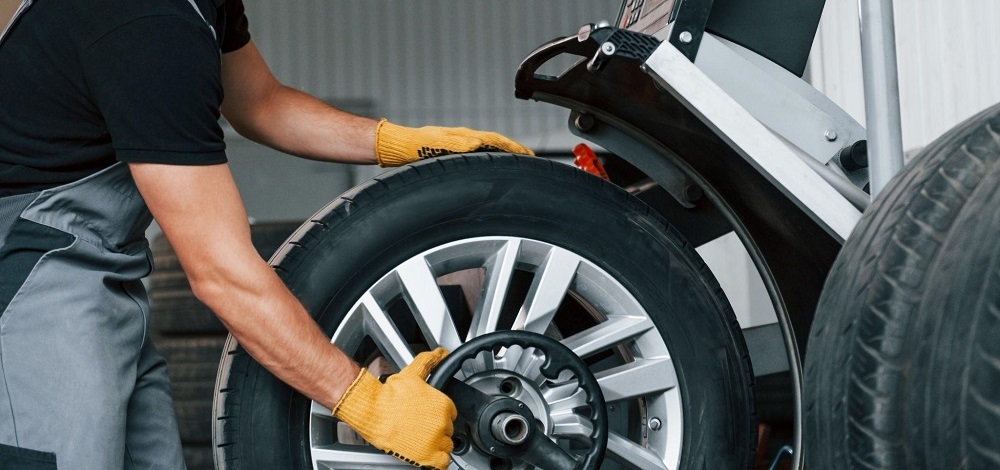Tire Solution: The Influence of Weather
When it comes to making sure ideal performance and safety when driving, understanding the effect of weather on tire solution is essential. From scorching warm to icy roadways, each weather condition component can significantly influence tire performance and total driving experience. By delving right into the effects of differing weather condition conditions on tires, chauffeurs can acquire important insights that might improve their car's performance and longevity. In this conversation, we will certainly check out the intricate connection between climate condition and tire service, clarifying the significance of weather-specific tire maintenance practices and factors to consider.
Warm and Tire Efficiency
When revealed to high temperature levels, tires experience changes in performance that can dramatically influence automobile security and handling. The warmth produced from long term driving or heat problems triggers the tire rubber to soften, causing lowered tread life and increased wear. As the rubber becomes softer, the tire's grasp when driving diminishes, impacting braking distances and general traction. In extreme instances, extreme warmth can also trigger tire blowouts, positioning a serious safety danger to the automobile and its residents.

Cold Climate Impacts
Cold climate conditions can have a significant influence on tire performance and safety and security. As temperature levels decline, tire rubber can solidify, bring about reduced grip on icy or snow-covered roadways. In chilly weather condition, tires might additionally lose atmospheric pressure extra rapidly, which can influence handling and gas effectiveness. Additionally, chilly temperature levels can trigger tire sidewalls to stiffen, raising the danger of damages from gaps or other road dangers.
To reduce the impacts of cold weather on tires, it is important to routinely check tire pressure and inflate them to the manufacturer's suggested degrees. Using winter season or all-season tires developed for winter problems can additionally improve traction and grasp on icy or snowy roadways. Correct tire maintenance, consisting of routine examinations for wear and damages, comes to be even more vital throughout cooler months to ensure optimal performance and safety and security.
Rainy Conditions Influence
During rainy problems, tire performance and safety and security can be substantially influenced by the damp roadway surfaces and reduced visibility. The tread pattern of tires plays a vital duty in keeping grip on damp roads. Tires with damaged footsteps are extra vulnerable to hydroplaning, where a layer of water develops up between the road and the tire surface, resulting in loss of grip. To battle this, motorists should consistently inspect their tires for sufficient tread deepness and consider investing in tires particularly created for wet problems.
Additionally, rainy weather can likewise lower exposure, making it testing for chauffeurs to see the roadway in advance plainly (GMC Tire Service). In such problems, it is necessary to change driving rates accordingly and preserve a secure adhering to distance to permit sudden quits. Properly inflated tires can also aid in maintaining control on damp roadways by providing far better handling and grasp
Snow and Tire Safety
Snow-covered roadways position one-of-a-kind difficulties for chauffeurs, emphasizing the value of proper tire option and maintenance. When driving in snowy conditions, having the appropriate tires can make a considerable difference in safety and security and efficiency. Winter season tires are designed with unique rubber substances and tread patterns to supply far better traction on snow and ice contrasted to all-season tires. The much deeper footsteps and sipes of winter months tires aid grasp the road much better, lowering the threat of sliding and sliding.

It is essential to comply with supplier guidelines when utilizing and installing tire chains to avoid damages to the tires and lorry. By selecting the right tires, keeping correct rising cost of living, and thinking about additional traction aids like tire chains, chauffeurs can boost their security when browsing snow-covered roads.
Weather-Related Tire Maintenance
Weather-related tire upkeep encompasses a range of methods aimed at ensuring optimum tire feature and durability in different weather situations. One key element of weather-related tire maintenance is tire pressure policy. Inspecting tire step consistently and changing tires when tread wear gets to a particular deepness is crucial for preserving grip and security in negative climate.
Verdict
In final thought, climate conditions have a substantial effect on tire efficiency and safety and security. From warmth affecting tire pressure and use to cool climate reducing traction, it is essential to consider the weather condition when keeping and making use of tires.
In this discussion, we will discover the detailed relationship between weather problems and tire service, losing light on the value of weather-specific tire upkeep techniques and considerations.

Comments on “Experience Accuracy with GMC Tire Service at Morris Tires”